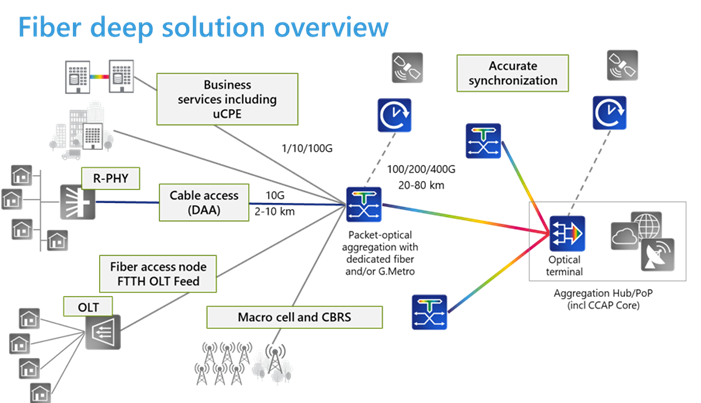Cable network operators have begun modernizing their infrastructure by extending fiber as deeply as possible. The trend to push fiber ever closer to the end user, in conjunction with distributed access architecture (DAA), is transforming cable networks and providing higher bandwidth capacity, improved customer quality of experience and access to advanced applications.
As cable network operators drive fiber deeper into their access networks, they need to decide on how to light it. Coherent technology, which revolutionized optical networking, is also essential in cable access networks. It enables the efficient use of constrained fiber resources and is supported by CableLabs’ Coherent Optics specifications, developed to help drive down cost.
But despite superior flexibility and spectral efficiency, coherent optics are not a panacea. The wide range of deployment scenarios and network architectures common in cable access networks makes passive optical technologies such as variants of NG-PON and G.metro/ITU-T G.698.4 a viable alternative, providing metrics that help minimize deployment cost while meeting scalability needs.
In addition to passive optics, packet aggregation is another technology that helps increase the efficiency of fiber deep networks. Bandwidth oversubscription and aggregation of traffic from partially filled ports of remote PHY devices (RPD) helps reduce the need for expensive router ports, therefore enabling low first-in cost, especially when initial capacity demand is moderate.
There is no single solution that can meet all requirements. Cable network operators will need to adapt to their specific requirements, building on a solution portfolio which addresses each of their needs. The following diagram provides an overview on the different technologies that need to be considered.

What’s more, precise synchronization delivered to the RPD is also required, with accuracy depending on the targeted application. While moderate precision is needed for synchronizing the shared access to the coaxial cable, mobile backhaul applications need extremely precise time information closely monitored by the connectivity service provider.
If you want to learn more about our fiber deep solution portfolio, please meet us at the CableLabs Summer Conference taking place in Keystone, Colorado from August 5 to 7. We’d love to chat about the benefits and drawbacks of different alternatives from a technical, operational and financial perspective. Based on close engagement with leading MSOs, we can suggest network migration scenarios and make recommendations to help cable network operators optimize their fiber deep deployments.
